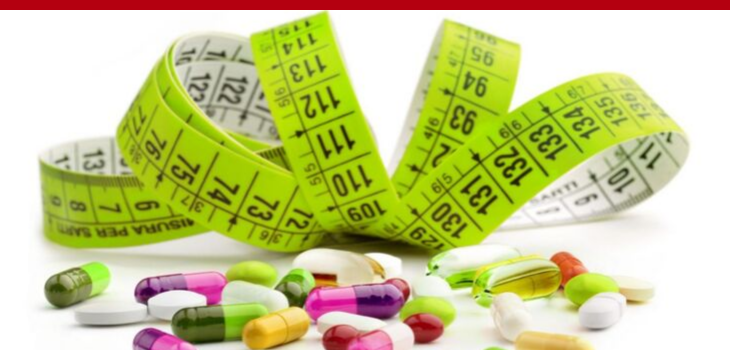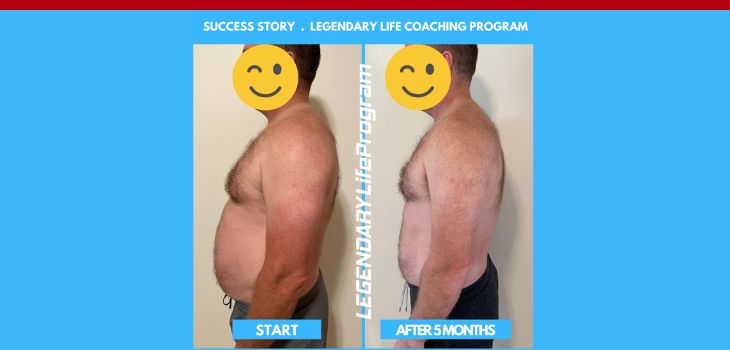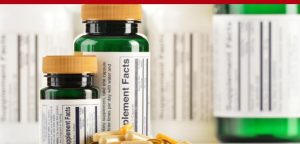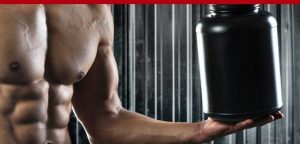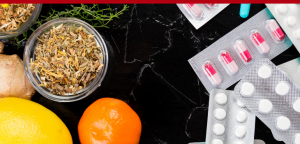(Subscribe to the Podcast Here)
(Watch This Video Training Here)
When you want to drop some weight, it’s tempting to look for help anywhere you can. If your thoughts turn to supplements then this episode is for you. In this episode, leading fitness trainer and health coach Ted explains why you should not trust the supplement industry, the 7 fat loss supplements that actually work and the 5 that are a complete waste of your money. Listen Now!
Before We Start…
Keep in mind that fat loss ultimately comes down to energy balance. In other words, you have to burn more energy (i.e. calories) than you take in.
The supplements we’ll talk about can only influence how much energy you’re taking in or how much energy you’re burning. Ultimately, adjusting your nutrition is how you create fat loss.
That said, we’ll cover the supplements that may help in addition to your fat loss nutrition plan and workout routine.
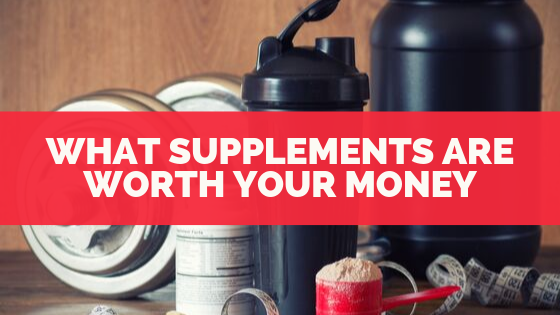
PROTEIN
Protein can support fat loss in different ways. First, protein helps you maintain or build muscle while you’re on a calorie-restricted nutrition plan. That way, more of the weight you’re losing will be fat instead of muscle.
Second, protein helps with hunger. It’s more satiating than carbs or fat. This influences how much you eat and therefore fat loss.
Third, your body works harder to digest protein than carbs or fat. The energy you use when digesting food is called TEF or the thermic effect of feeding. Meals that contain low amounts of protein burn up to 10% of the energy in that meal.
Protein-rich meals can burn up to 30% of the energy in a meal just to digest it. This helps with fat loss by lowering the amount of energy your body absorbs.
Whole foods should be your first choice. It’s a better source of protein and helps you feel more full than protein supplements.
That said, I find many of my clients have a hard time eating enough protein from whole food sources.
So adding a protein powder supplement can help you get enough protein by making it more convenient.
You’ve heard of whey but there are actually two types of protein powders—whey protein and casein. Both powders are derived from milk protein (which is 20% whey and 80% casein).
Whey protein is inexpensive and good for building muscle.
Casein is more expensive but may be better for preserving muscle. Since casein digests slowly, it is often seen as the ideal protein for people struggling with hunger.
But what if you are lactose intolerant? You can still use whey protein if you’re lactose intolerant. But make sure you buy whey protein isolate (instead of concentrate) because it contains very little lactose.
What if you’re a vegan?
For vegans, I recommend taking a pea protein and grain protein blend. Pea and grain blends are considered the vegan alternative to whey protein due to their similar amino acid profiles.
How Much To Take:
Your protein intake should be based on body weight, not on how many calories you’re eating.
- If you’re at a healthy weight and workout, make your daily protein target in the range of 1.00-1.50 g per lb of body weight (2.2–3.3 g/kg).
- If you’re overweight or obese, make your daily protein target in the range of 0.54–0.68 g per lb of body weight (1.2–1.5g/kg).
If you want to avoid doing math—which I don’t recommend—take 1 serving of your protein shake 2-3 times per day.
My Product Recommendations:
It’s a vegetarian protein blend with 7 ingredients: Pea, Quinoa, Hemp, Coconut, Monk Fruit, Cinnamon, and Vanilla Bean. This is critical as you need a blend to ensure you are getting ALL of the essential amino acids your body requires and craves for functioning on all cylinders.
It contains live enzymes to help ensure it is absorbed in your body and doesn’t end up literally going down the toilet. And the taste is great.
Use Code TED20 to save 20% on your first order.
Dymatize ISO 100 Hydrolyzed Whey Protein Powder Isolate
What I like about this brand is that you get 25 grams of high-quality protein from 100% whey protein isolate. Also, if you’re on a budget, it’s a good option.
CASEIN
My Product Recommendations:
Dymatize Elite 100% Micellar Casein
Dymatize Elite Casein helps to keep your muscles supplied with a steady stream of amino acids, the building blocks of muscle protein. Casein can increase satiety and provide a slower release of muscle-building amino acids.
Optimum Nutrition Gold Standard 100% Casein
5-HTP
5-Hydroxytryptophan (5-HTP) is a naturally occurring chemical that your body uses to make the neurotransmitter serotonin. Lower serotonin levels are found in people who’re depressed and people who have high levels of chronic inflammation. For example, people with metabolic syndrome or who have high levels of excess body fat have been found to have higher biomarkers of inflammation.
Supplementing with 5-HTP improves serotonin signaling, which may reduce carbohydrate cravings. Several studies have shown that supplementing with 5-HTP has helped overweight women and men to control their appetite—especially with carbohydrate cravings.
5-HTP has been used with success to restore serotonin levels in those that may suffer from decreased serotonin levels.
Fewer and less intense carbohydrate cravings can lead to eating fewer calories, and thus as weight loss.
The current suggests that 5-HTP will benefit people with obesity and/or diabetes the most. That said, if you’re healthy weight but struggle with carb cravings, it would be worth a try.
Something that is really important is that if you’re currently taking antidepressants, tramadol, dextromorphan or other medications that affect serotonin levels, you want to avoid taking 5-HTP as this can lead to a condition called serotonin syndrome.

How Much To Take:
Take either 300–500 mg once a day or 150–250 mg twice a day, preferably 30 minutes before a meal, especially one containing carbohydrates.
If you take 5-HTP in the evening, it may reduce food cravings before bed and might also improve you sleep quality by helping your body to produce melatonin. (Melatonin is a hormone that regulates sleep.)
You should stop taking 5-HTP after you get the benefits to assess whether you’re still experiencing carbohydrate cravings or not.
My Product Recommendations:
EGCG
Tea is the most popular beverage in the world after water and has a history spanning thousands of years. Although there are many kinds of herbal infusions, actual tea is made from the leaf of Camellia sinensis.
This is important because tea from Camellia sinensis contains phytochemical called catechins.
These catechins are what give tea its antioxidant properties.
Tea is the most popular beverage in the world after water and has a history spanning thousands of years. Although there are many kinds of herbal infusions, actual tea is made from the leaf of Camellia sinensis.
This is important because tea from Camellia sinensis contains phytochemical called catechins.
These catechins are what give tea its antioxidant properties.
When it comes to burning fat, studies have found that EGCG can help burn fat by inhibiting the catechol-O-methyltransferase (COMT) enzyme.
COMT breaks down a class of chemicals in your body known as catecholamines.
These include neurotransmitters and hormones dopamine, norepinephrine, and epinephrine.
When it comes to burning fat, studies have found that EGCG can help burn fat by inhibiting the catechol-O-methyltransferase (COMT) enzyme.
COMT breaks down a class of chemicals in your body known as catecholamines.
These include neurotransmitters and hormones dopamine, norepinephrine, and epinephrine.
How Much To Take:
Take 400–500 mg of EGCG per day.
If you’d rather drink free tea than take a supplement, know that the EGCG content of a standard cup of green tea can vary from less than 50mg to more than 100 mg per cup. So you’ll need to drink in between 4–8 cups a day to reach the minimum EGCG dose for fat burning.
Other things to know is that taking caffeine with EGCG works synergistically to help you lose more fat, but only if you don’ take caffeine regularly.
If you decide to take EGCG with caffeine, the fat-burning boost you get from taking these supplements will diminish over time.
My Product Recommendations:
CAFFEINE
Besides having beneficial effects on your mood and energy levels, caffeine can also help with fat loss by causing epinephrine (a.k.a. adrenaline) and dopamine to be released.
Although I’ll tell you all about how to use caffeine to burn fat, keep in mind that you build up a resistance to its effects—especially if you take caffeine regularly as a supplement or drink a lo of caffeine containing beverages.
As you build up a tolerance, it’s central nervous system stimulating effects aren’t as strong and the fat loss benefit doesn’t work as well either. So it’s best to use higher doses of caffeine that I’ll be recommending here for a limited period of time then stop.
Caffeine can also disrupt your sleep. This can have negative effects on your hunger and recovery levels.
Besides having beneficial effects on your mood and energy levels, caffeine can also help with fat loss by causing epinephrine (a.k.a. adrenaline) and dopamine to be released.
Although I’ll tell you all about how to use caffeine to burn fat, keep in mind that you build up a resistance to its effects—especially if you take caffeine regularly as a supplement or drink a lo of caffeine containing beverages.
As you build up a tolerance, it’s central nervous system stimulating effects aren’t as strong and the fat loss benefit doesn’t work as well either. So it’s best to use higher doses of caffeine that I’ll be recommending here for a limited period of time then stop.
Caffeine can also disrupt your sleep. This can have negative effects on your hunger and recovery levels.

How Much To Take:
To supplement caffeine for a prolonged period of time, take 100–200 mg twice a day. That’s total of 200–400 mg per day.
You can get this mount of caffeine through coffee or tea if you want. And you get the added benefits of the antioxidants in the tea or coffee. IMPORTANT: Do not supplement caffeine if you get enough through dietary sources.
People who aren’t used to caffeine should start at the low end of this range and decided whether to add from there.
People who are sensitive to stimulants should start by supplementing caffeine by itself before introducing other stimulants. L-theanine can be added to caffeine to boost the cognitive effects while reducing jitteriness.
Taking caffeine on an empty stomach increases how fast your body absorbs it. So take it with with a meal or protein shake to lessen the intensity. It can also upset your stomach if you haven’t eaten.
Caffeine can disrupt your sleep if you drink it in the evening or even in the afternoon. Even if it doesn’t stop you from falling asleep, caffeine will most likely lessen your sleep quality. And if you’re under high levels of stress and/or expose yourself to blue light at night, this can disrupt your sleep even more.
For most people, the average half-life of caffeine falls between 5 and 6 hours. But this number can vary greatly between individuals.
Because of genetics and other factors, take it slow with caffeine supplementation to assess how you react and how long it lasts. And keep in mind that heavy smoking can double the rate of caffeine metabolism while pregnancy can halve it.
My Product Recommendations:
Natural Stacks – Smart Caffeine
I like the Smart Caffeine from Natural Stacks, because it’s a great brand that is serious about their ingredients and have a great reputation. Also, this product not only can help you with you fat loss journey, but also with your energy levels. It’s a win-win.
Use Code LEGENDARY15 to save 25%.
My Recommendation: Budget Option
YOHIMBINE
Yohimbine is part of a class of chemicals known as alkaloids. It’s found in the bark of the African tree Yohimbe (Pausinystalia johimbe). It can help burn fat by increasing epinephrine (a.k.a. adrenaline) levels in the body and by inhibiting a regulatory process in fat cells that normally suppresses fat use.
Yohimbine is also marketed as a sexual performance enhancer. A fun fact is that before Viagara, a medication derived from the yohimbe tree was often prescribed for erectile dysfunction.
Because the receptors it targets are found in higher levels around the oblique muscles, yohimbine has been used by many bodybuilders and physique athletes to lose fat from the love handle and abdominal area. You may have seen a product that contains topical yohimbine that is marketed with this goal.
Although studies that used topical yohimbine support this, but the scientific evidence isn’t very strong.
Yohimbine is part of a class of chemicals known as alkaloids. It’s found in the bark of the African tree Yohimbe (Pausinystalia johimbe). It can help burn fat by increasing epinephrine (a.k.a. adrenaline) levels in the body and by inhibiting a regulatory process in fat cells that normally suppresses fat use.
Yohimbine is also marketed as a sexual performance enhancer. A fun fact is that before Viagara, a medication derived from the yohimbe tree was often prescribed for erectile dysfunction.
Because the receptors it targets are found in higher levels around the oblique muscles, yohimbine has been used by many bodybuilders and physique athletes to lose fat from the love handle and abdominal area. You may have seen a product that contains topical yohimbine that is marketed with this goal.
Although studies that used topical yohimbine support this, but the scientific evidence isn’t very strong.
Also check for drug interactions and other contraindications if you decide to experiment with yohimbine. Yohimbine is known to interact with antipsychotics, antidepressants, ergotamines.
Some people combine yohimbine with other stimulants. This can lead to an increase in the chances of dangerous side effects or even death. In fact, there are several deaths linked to taking high doses of yohimbine.
Be careful of what yohimbine supplement you use as a recent study found that out of 49 supplements tested, only two provided accurate information about the quantity of yohimbine they contained as well as other information about the herb’s known side effects. While some contained less, many of the supplements were found to contain much more yohimbine than listed on the label, often the equivalent of prescription-strength dosages.
How Much To Take:
A typical dose of yohimbine is 5–15 mg twice a day (i.e., 10–30 mg/day).
I highly recommended that you start at the low end of the range before taking higher doses.
Supplementation is more effective on an empty stomach but also increases the chances for side effects (i.e., during short-term fasting or even just between meals).
My Product Recommendations:
FORSKOLIN
Forskolin is the main bioactive compound found in the herb known as Coleus forskohlii. This herb has been used in Ayurvedic medicine since ancient times. Forskolin supplementation may increase testosterone, protect against cancer and inflammation, and may help you lose body fat.
Although further research is needed to confirm these results, there was one interesting study on overweight and obese men that found taking 250 mg of 10% forskolin extract twice a day helped these men lose more fa and gain more muscle compared to the placebo group over a 12-week period. It also helped increase bone mass and serum free testosterone levels in overweight and obese men. Anecdotally, many people say it helps them control their appetite.
Forskolin is the main bioactive compound found in the herb known as Coleus forskohlii. This herb has been used in Ayurvedic medicine since ancient times. Forskolin supplementation may increase testosterone, protect against cancer and inflammation, and may help you lose body fat.
Although further research is needed to confirm these results, there was one interesting study on overweight and obese men that found taking 250 mg of 10% forskolin extract twice a day helped these men lose more fa and gain more muscle compared to the placebo group over a 12-week period. It also helped increase bone mass and serum free testosterone levels in overweight and obese men. Anecdotally, many people say it helps them control their appetite.
How Much To Take:
Take 250 mg of a supplement that contains 10% forskolin, twice a day, for a 500 mg total daily dose.
I highly recommended that you start at the low end of the range before taking higher doses.
Supplementation is more effective on an empty stomach but also increases the chances for side effects (i.e., during short-term fasting or even just between meals).
My Product Recommendations:
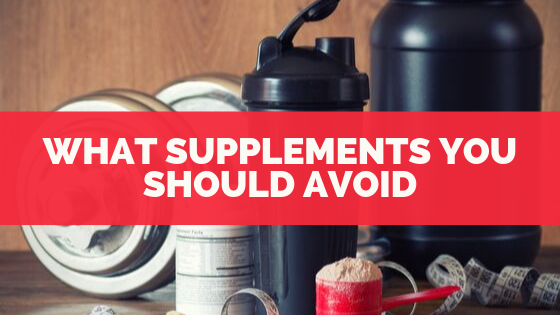
WHAT SUPPLEMENTS TO AVOID
Don’t waste your money on these supplements. And while you might not think twice about taking a dietary supplement in an effort to look your best, it turns out that several ingredients within these supplements that claim to help us shed unwanted pounds don’t contribute to weight loss in any way, and may actually be harming our overall health.
Now let’s cover the supplements that are effective for fat loss.
GARCINIA CAMBOGIA
Garcinia Cambogia is a popular weight loss supplement. It derived from the Malabar tamarind fruit. IThe peel of the fruit contains high amounts of hydroxycitric acid (HCA), which is the active ingredient believed to be responsible for most of its weight loss benefits. You might know the product Hydroxycut.
Garcinia became famous as a fat loss supplement in the 70s when a study in rats found that it reduced food intake by as much as 17% and weight gain by as much as 36%. It was a assumed that this would apply to people but recent research suggests it doesn’t.
Although several studies have shown modest weight loss, there are many that showed no benefit at all. the largest study — in 135 people — did not find any difference in weight loss between those taking garcinia cambogia and the placebo group.
CLA
Conjugated Linoleic Acid (CLA) is a mixture of fatty acids. CLA has been investigated to be a fat burner and health promoting agent. as a result, many supplement companies sell CLA as a fat burner.
That said, human studies on CLA are very unreliable and the overall effects seen with CLA are not impressive. Sometime the results of CLA studies even contradict each other.
There’s no reason to spend money on CLA unless you like helping supplement company executives make their BMW payments.
HOODIA GORDONII
Hoodia gordonii is a type of plant traditionally used by indigenous people in southern Africa as an appetite suppressant during famines.
There’s no research showing that it works. A 15-day study in 49 overweight women found that 2.2 grams of Hoodia gordonii per day taken one hour before meals had no effect on body weight or calorie intake compared to a placebo.
On top of the lack of effectiveness as a fat loss supplement, it’s side effects include raising blood pressure by 5.9-15.9mmHg systolic and 4.6-11.5mmHg diastolic.
It also raises liver enzymes which indicates possible hepatotoxicity (harmful to your liver).
GREEN COFFEE EXTRACT
Green coffee extract (GCE) is an extract of unroasted, green coffee beans. It’s rich in chlorogenic acid—a compound that has antioxidant and anti-inflammatory properties.
Coffee has some chlorogenic acid in it but much of it is lost during the roasting process.
While chlorogenic acid may benefit cardiovascular function, there is limited evidence that it helps with fat loss.
There are also better supplements that benefit cardiovascular function.
There’s just no compelling evidence to justify taking Green Coffee Extract.
RASPBERRY KETONES
Contrary to it’s name, raspberry ketones are only found in very tiny amounts in raspberries. Raspberry ketone supplements are synthetically made in labs and has been used in food and cosmetics for years.
In short, there is no research that shows taking raspberry ketones orally leads to fat loss. The original fat loss claim is from research done in rats. But it appears he way raspberry ketones work in rats is very different than humans
That said, there’s one study showing that applying raspberry ketones topically can help with hair regrowth and skin elasticity. But the effects are minor.
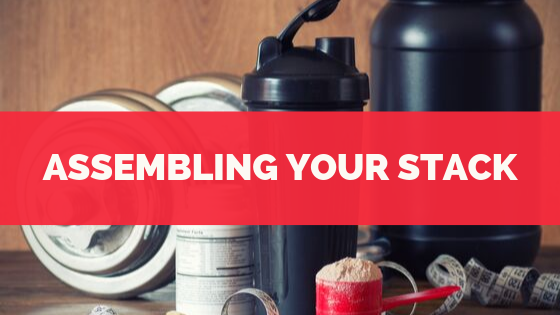
PUTTING YOUR FAT LOSS STACK TOGETHER
Dial In Your Protein:
If fat loss is your goal, shoot for consuming 0.68–1.00 g of protein per lb per day. Use protein supplements if you have a hard time getting enough protein from food. Just keep in mind that whole food protein most likely works better to maintain muscle mass and will help more with hunger than a protein supplement. If you struggle with hunger while using whey protein, switch to casein instead.
Do this for a least one month before changing anything. After that, you can tweak your protein intake based on your results.
Keep In Mind: Nutrition is the single most powerful tool for fat loss—especially protein due to its muscle sparing and metabolism boosting effects. Exercise is less effective with fat loss. The least effective strategy of all is to take supplements without addressing your nutrition.
After you dial in your protein, you can add either the non-stimulant stack or stimulant stack (or both). Just keep in mind that stimulants can be synergistic when you combine them. And even at low doses can be dangerous—especially for the heart.
Non-stimulant Fat Loss Stack:
Take 5-HTP (300 mg/day, increasing to 500 mg/day over a week) and EGCG (400–500 mg/day).
Keep In Mind: Periodically cycle off of 5-HTP to see if it’s working to help with your carbohydrate cravings.
This stack can be supplemented year round.
You can also use this stack with the stimulant stack for increased fat loss.
Stimulant Fat Loss Stack:
Take the following doses twice a day for 12 weeks, followed by a 12-week break.
Start with 100–200 mg of caffeine. Once you start developing a tolerance, then you can add synephrine (10–20 mg) and a white willow bark extract (60 mg of salicin). This is similar to the ECA (ephedrine/caffeine/aspirin) stack that bodybuilders and physique competitors have been using for decades. For both caffeine and synephrine, start at the lower end of the range.
Again, you’ll take these doses twice per day.
Other options:
Adding L-theanine at a 1:1 ratio to caffeine can ward off overstimulation while still getting the benefits of fat loss and mental focus. So if you take 100–200 mg of caffeine twice a day, take 100–200 mg of theanine twice a day.

FAQ
1) Can I add to my stack a supplement not covered in this guide?
Try what I’ve laid out for you here first. Although there are some other interesting fat loss supplements, like forskolin for example, the supplements that I’ve listed here have the strongest research backing their use. If you still decide to add something , make sure you check for negative interactions as well as synergistic effects so that you don’t reduce the effectiveness or have any side effects that could be dangerous.
2) Can I modify the recommended doses?
Don’t mess around with the dosages. If I’ve listed a recommended dosage range, then stay within that range. If I’ve listed a specific dose for a supplement, then stay within 10% of that dose. More isn’t necessarily better and can be counterproductive or even dangerous.
3) Should I take my supplements with or without food? And at what time?
We don’ have clear answers for many of these questions. So experimenting is the best way to figure out these answers for yourself to see if you notice a difference.
Keep in mind that taking supplements with food will usually make it easier on your digestive system while slowing down how fast you absorb your supplements. This is especially important with the stimulant stack where you may experience a stronger effect if you take it without any food.
I also recommend that you start with half the regular dose I mentioned with regards to the stimulants if you aren’t sure about your reaction to them. This will help you assess the right dosage for you. It will also help you avoid side effects like insomnia or irritability that is known to happen from taking stimulants.
4) Why isn’t ephedrine included in this guide?
Although ephedrine seems to be fairly safe when used appropriately, it’s prohibited or restricted in various countries as a supplement. You can only get it by prescription. Therefore, I can’t recommended it. I’ve suggested synephrine because it’s similar to ephedrine. It’s safer but also may be less effective.
4) Why isn’t ephedrine included in this guide?
Although ephedrine seems to be fairly safe when used appropriately, it’s prohibited or restricted in various countries as a supplement. You can only get it by prescription. Therefore, I can’t recommended it. I’ve suggested synephrine because it’s similar to ephedrine. It’s safer but also may be less effective.
Related Post: The Ultimate Supplement Guide For Muscle Growth & Exercise Performance
Are You Still Confused About What Supplements Work And What To Avoid?
We know that supplements are big business. But it’s not like you can trust supplement companies. They have one goal: to convince you to buy their supplements.
Each month, we get hundreds of messages and emails from frustrated listeners. They’re sick of misinformation and harmful marketing hype. They just want to know what’s a waste of money and what works. They’re looking for guidance on the right supplements to help them achieve their specific health goals.
So, Ted combined his 20 years of experience as a fitness trainer and health coach to help you figure out exactly what to take.
The Ultimate Supplement Guides are the result. We’ve taken our decades of knowledge and experience and summed it up in a series of practical guides, with each focused on a specific health goal – burning fat, building muscle, sleep, memory and focus, joints, and much more.
>>Click Here To Get Instant Access now!



